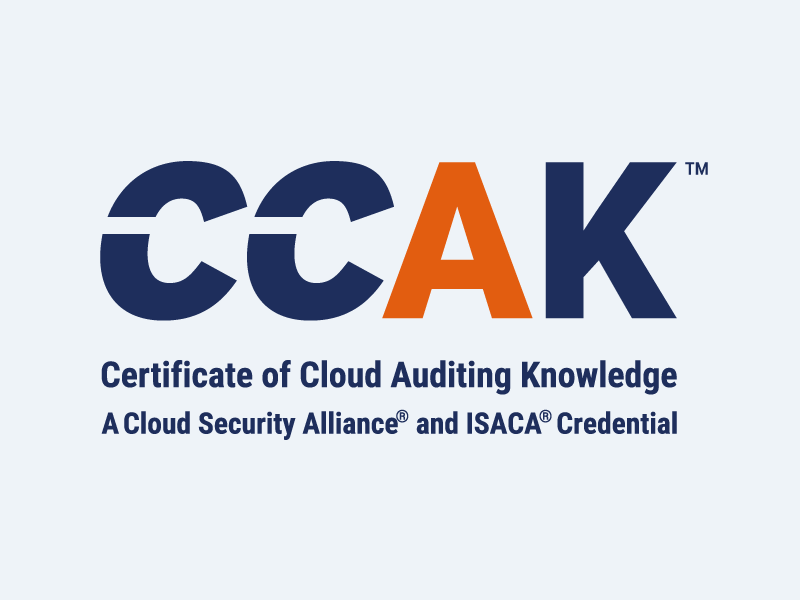Leveraging Sustainable Technology for ESG Compliance
Blog Article Published: 06/08/2023
Originally published by Sangfor Technologies.
Written by Nicholas Tay Chee Seng, CTO, Sangfor Cloud.
The ESG framework will encourage more organizations to adopt sustainable and renewable practices necessary to address global climate change. However, achieving the COP21 Paris Agreement's net-zero target by 2050 will require the participation of all nations, industries, and people. Embracing sustainable solutions through ESG practices also presents an opportunity for organizations to enhance business resiliency in the long term. A recent analysis conducted by a global market intelligence and advisory firm in collaboration with the World Economic Forum revealed that digital technologies, such as hyperconvergence and hybrid cloud, hold the potential to significantly reduce CO2 emissions and align with the International Energy Agency's net-zero trajectories by 2050. This emphasizes the crucial role of tech leaders in aiding their organizations in reducing CO2 emissions and transitioning towards carbon neutrality.
Background of ESG
The 2015 Paris Agreement played a significant role in elevating the significance of the Environmental, Social, and Governance (ESG) framework. It established the overarching goal of keeping the increase in the global average temperature to well below 2°C above pre-industrial levels, with the aim of achieving net zero CO2 emissions by 2050. The ESG framework provides guidance to stakeholders in understanding and implementing practices that minimize greenhouse gas (GHG) emissions and promote sustainability. Its principles are based on assessing an organization's commitment to sustainability goals by incorporating ESG factors. This includes the management of GHG emissions, waste, and air and water pollution. These factors have been identified as major contributors to biodiversity loss and environmental degradation, ultimately impacting global climate change.
Global Adoption of ESG
ESG regulatory requirements are becoming increasingly prevalent globally. Notable examples of countries and regions that have proposed or adopted ESG regulations include:
- USA: The US Securities and Exchange Commission (SEC) proposed rule changes on March 21, 2022, requiring companies to disclose climate-related information, such as greenhouse gas emissions, climate risks, and transition plans.
- Europe: The EU's Sustainable Finance Disclosure Regulation (SFDR) took effect on March 10, 2021, as part of broader efforts to promote sustainable finance within the EU. It aims to facilitate the transition to a more sustainable and eco-friendly economy.
- Asia: ESG regulations are gaining importance in Asia, with countries like Japan, China, Singapore, and Malaysia proposing or implementing mandatory ESG reporting requirements and governance measures.
While ESG regulations can vary across countries, there is a growing emphasis on transparency and consistency in ESG reporting and disclosure. Stakeholders now expect clear and comparable disclosures across companies and industries. Many regulatory bodies prioritize the disclosure of ESG data that is relevant and impactful to businesses, aiming to enhance corporate social responsibility and sustainability.
For businesses, ensuring compliance with ESG regulations is increasingly vital, and ESG considerations have become a crucial element of their risk management strategies. Non-compliance can lead to reputational damage and financial penalties, whereas ESG compliance demonstrates a commitment to sustainability, attracting capital from responsible investors. For investors, ESG regulations provide a framework for evaluating the sustainability, corporate governance, and social responsibility of potential investments. Investors are increasingly seeking companies aligned with ESG best practices and regulations, as they seek to build portfolios that reflect their values and mitigate long-term risks associated with ESG issues.
The Role of Sustainable Tech in ESG Compliance
Technology plays a pivotal role in addressing the environmental aspects of ESG and sustainability. Its primary focus is on minimizing greenhouse gas (GHG) emissions generated by the energy and utility sectors that power IT estates and infrastructures, which greatly contribute to global climate change.
The Huge Carbon Footprint of Data Centers
Today’s high-performance server racks can easily consume in excess of 20-30KW or more as they are configured with newer generation CPUs and GPUs that have much higher thermal power densities. As each rack consumes more energy and generates more heat, cooling systems are under greater pressure to maintain optimal temperatures. Consequently, data center energy consumption rises, contributing to an upsurge in CO2 emissions.
Moreover, data centers predominantly rely on grid electricity, which is primarily derived from hydrocarbon sources. These sources are major contributors to global climate change, accounting for over 75% of global greenhouse gas emissions and nearly 90% of total CO2 emissions. In the 2022 Data Centres and Data Transmission Networks report, the International Energy Agency (IEA) estimated that data centers and data transmission networks are responsible for nearly 1% of energy-related GHG emissions. The report also noted that global data center electricity use in 2021 was 220-320 TWh2, or around 0.9-1.3% of global final electricity demand. Most of this demand arises from powering servers, which generate heat and require energy-intensive cooling systems. Data centers also consume substantial amounts of water for cooling purposes, including cooling towers, chillers, pumps, piping, heat exchangers/condensers, and CRAC units, further exacerbating the environmental impact of data centers.
However, the latest generation of data centers is designed and constructed to operate on renewable energy sources like wind, solar, and hydro, replacing hydrocarbon sources like coal and gas. This transition significantly reduces the environmental impact and carbon emissions of data centers, accelerating progress toward achieving net-zero emissions by 2050. Renewable energy sources differ from fossil fuels primarily in their diversity, abundance, and global applicability. Most importantly, they do not produce greenhouse gases, which are responsible for climate change, nor do they emit pollutants.
Leveraging Cloud Computing as the Key Sustainable Technology
The carbon footprint of data centers can be reduced by replacing legacy physical infrastructure with cloud-based virtualization. Traditional IT sectors relied on on-premises servers for extensive computation, resulting in high costs for space and energy. Cloud computing was subsequently introduced to mitigate these costs and challenges. According to a global market intelligence and advisory firm, cloud computing has the potential to prevent nearly 1 billion metric tons of CO2 emissions per year by shifting workloads to newer generation data centers with Hybrid Cloud or Hyperconverged Infrastructure (HCI), combined with effective use of renewable resources such as solar, wind power, and water for cooling. These efforts directly translate to greater energy efficiency, with data centers achieving a power utilization efficiency (PUE) as low as 1.2-1.3, resulting in reported energy savings of up to 80%.
Conclusion
Transitioning business towards sustainability by implementing ESG initiatives to reduce CO2 and carbon footprint is a step in the right direction in building your business resilience. However, the transition phase can be full of challenges as each business faces unique circumstances. Advancements in server virtualization technology have significantly reduced the number of physical servers through consolidation. HCI, in particular, has been identified as a solution that can substantially decrease CO2 emissions by consolidating the IT estate. Unlike traditional architectures, HCI software combines compute, storage, networking, and management into a tightly integrated platform. This reduction in the number of racks and servers significantly lowers the demand for power and cooling, leading to a considerable reduction in carbon footprint and CO2 emissions.
About the Author
Nicholas has an extensive career spanning over 20 years, during which he has played a major role in the ideation, formulation, and co-creation of new cloud solutions for both enterprise and government sectors. His expertise spans across multiple domains including Cloud, Data Centre, Network & Connectivity, which he blends to support organizational Digital Transformation & Modernization and Industry 4.0, including 5G. His proficiency is backed by various sales and pre-sales certifications from key global technology firms such as Sangfor, AWS, Microsoft Azure, Dell EMC, Google, IBM, NetApp, Oracle, Red Hat, and VMware, enabling him to adopt the latest global technology trends, especially in the cloud domains.
Trending This Week
#1 The 5 SOC 2 Trust Services Criteria Explained
#2 What You Need to Know About the Daixin Team Ransomware Group
#3 Mitigating Security Risks in Retrieval Augmented Generation (RAG) LLM Applications
#4 Cybersecurity 101: 10 Types of Cyber Attacks to Know
#5 Detecting and Mitigating NTLM Relay Attacks Targeting Microsoft Domain Controllers
Related Articles:
CPPA AI Rules Cast Wide Net for Automated Decisionmaking Regulation
Published: 04/26/2024
Upselling Cybersecurity: Why Baseline Security Features Shouldn’t Be a Commodity
Published: 04/24/2024
Understanding the Nuances: Privacy and Confidentiality
Published: 04/22/2024
How to Set Your Small Privacy Team Up for Success
Published: 04/17/2024








